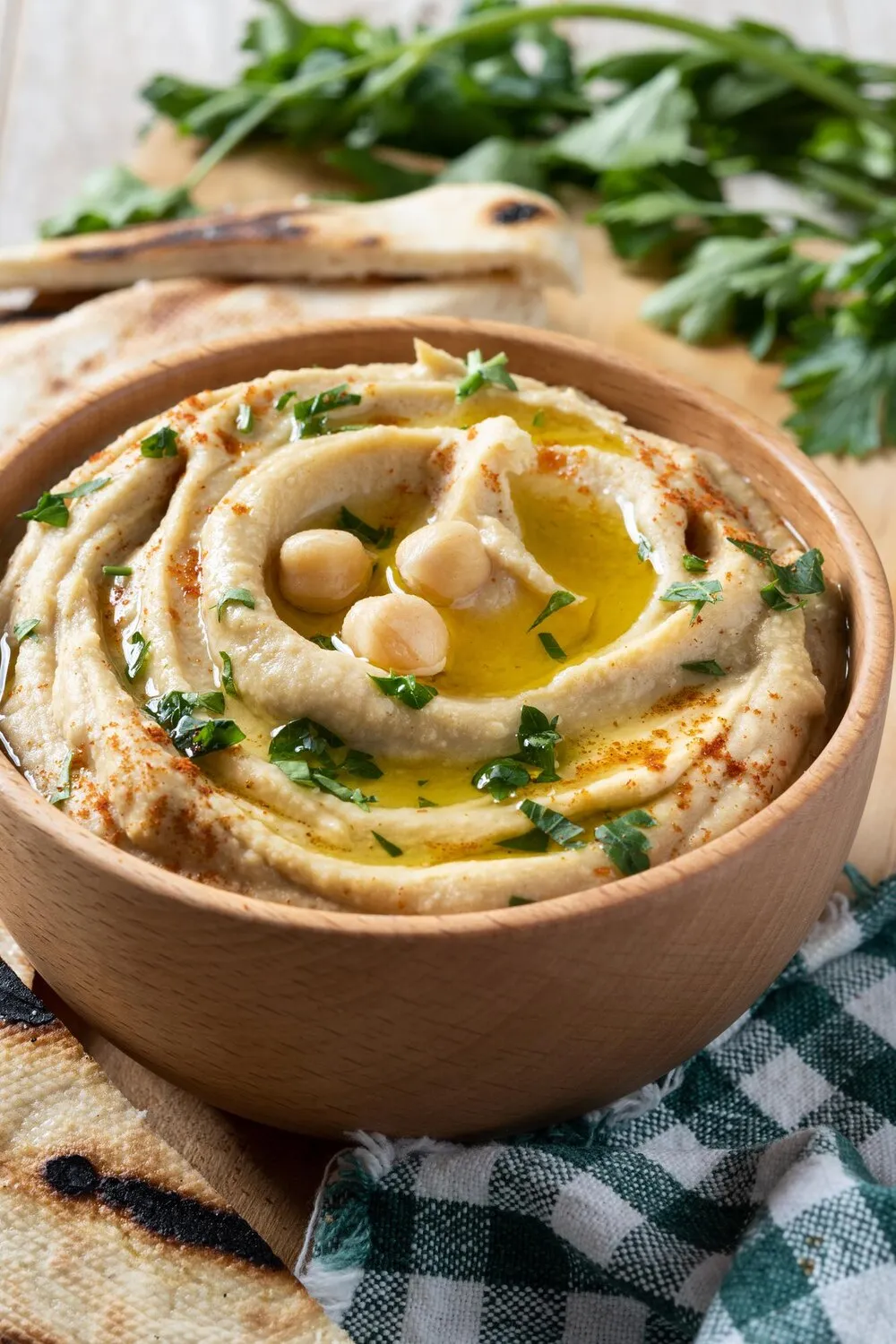
Hummus
Classic hummus dish, likely the restaurant's namesake and a staple of Middle Eastern cuisine. Expect a creamy blend of chickpeas, tahini, lemon juice, and garlic, served with pita bread or vegetables.
Nutrition Facts
* The % Daily Value (DV) tells you how much a nutrient in a serving of food contributes to a daily diet. 2,000 calories a day is used for general nutrition advice.
Hummus's exact origins are debated, but its roots trace back centuries in the Levant. Chickpeas have been cultivated in the region for millennia, and the combination of chickpeas and tahini likely emerged gradually as a culinary staple. Evidence suggests hummus-like preparations existed in medieval Arabic cookbooks, though the precise recipe we know today developed over time.
Hummus is more than just a dip; it's a deeply ingrained part of Middle Eastern culture, representing hospitality, sharing, and community. It's commonly served as part of a meze, a selection of small dishes meant to be enjoyed communally.
Communal Eating
Hummus is typically served in a large bowl and shared among diners, symbolizing unity and togetherness. Eating from a common dish fosters a sense of connection.
Hospitality
Offering hummus to guests is a sign of warmth and welcome. It's a gesture of generosity and a way to make visitors feel comfortable.
Everyday Staple
Hummus is enjoyed at all times of the day, from breakfast to dinner. It's a convenient and nutritious food source that is readily available.
Regional Variations
While the basic recipe remains consistent, different regions and families may add their own unique touches, such as different spices, herbs, or toppings, creating variations in flavor and texture.
Hummus offers a balanced blend of savory, nutty, tangy, and subtly earthy flavors. The creamy texture enhances the overall experience, making it a versatile and satisfying dish.
The primary flavor comes from the chickpeas, offering a mild, earthy base. Tahini (sesame seed paste) contributes a rich, nutty, and slightly bitter flavor. Lemon juice provides a crucial tang that balances the richness. Garlic adds a pungent, savory note that complements the other ingredients. Olive oil, often drizzled on top, introduces a fruity and peppery finish. Additional spices like cumin or paprika can enhance the overall flavor profile.
Soaking and Cooking Chickpeas
Soaking dried chickpeas overnight and then cooking them until very tender is crucial for a smooth texture. Some chefs even recommend peeling the chickpeas after cooking for an extra-smooth result.
Quality Tahini
The quality of tahini greatly impacts the flavor of the hummus. Look for tahini made from 100% sesame seeds with a smooth, pourable consistency and a slightly nutty aroma. Avoid tahini that is overly bitter or grainy.
Ice Water
Adding a small amount of ice water while blending helps to create a light and fluffy texture. The cold water emulsifies the ingredients and prevents overheating.
Blending Technique
Blend the tahini and lemon juice together first to create a creamy base. Then, gradually add the chickpeas and garlic, followed by ice water as needed, until the desired consistency is achieved. Blend for several minutes to ensure a smooth and creamy texture.
Explore additional Middle Eastern dishes and restaurants
Explore Middle EasternDiscover top dining spots and culinary experiences in Bolzano.
Explore BolzanoLearn more about the food culture, restaurant scene, and culinary heritage of Italy.
Explore Italy